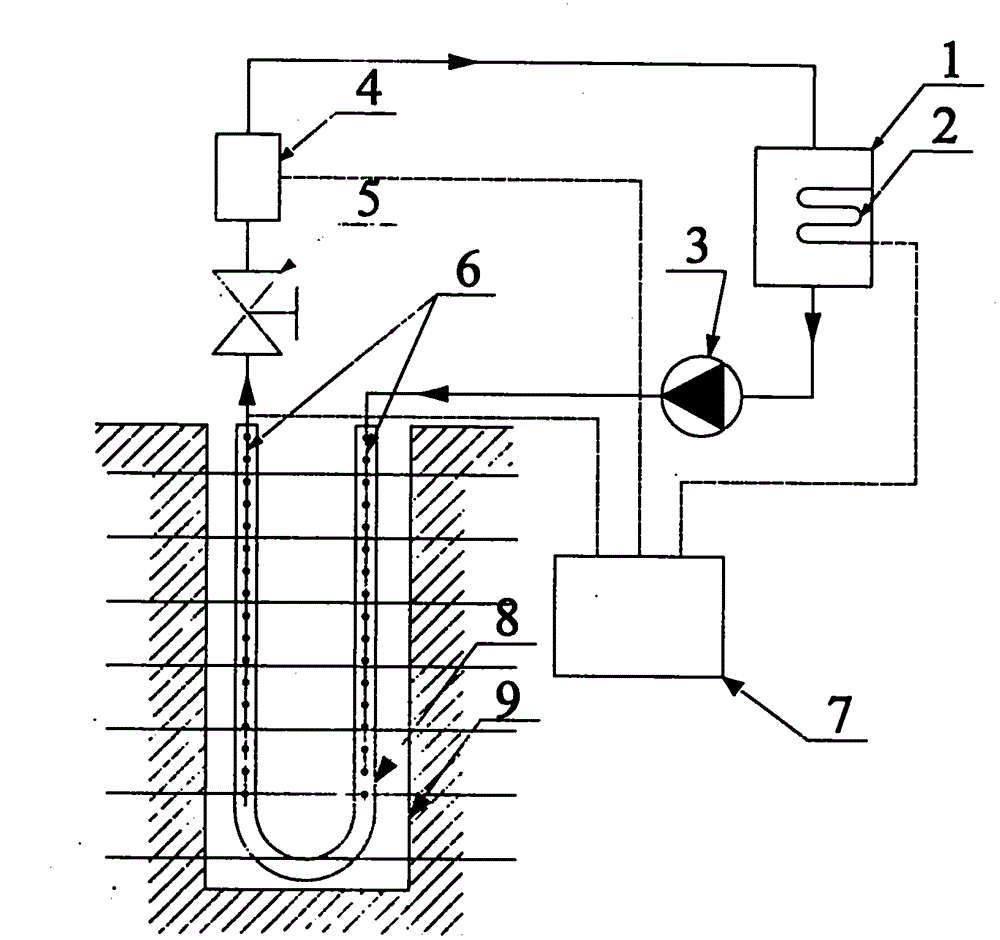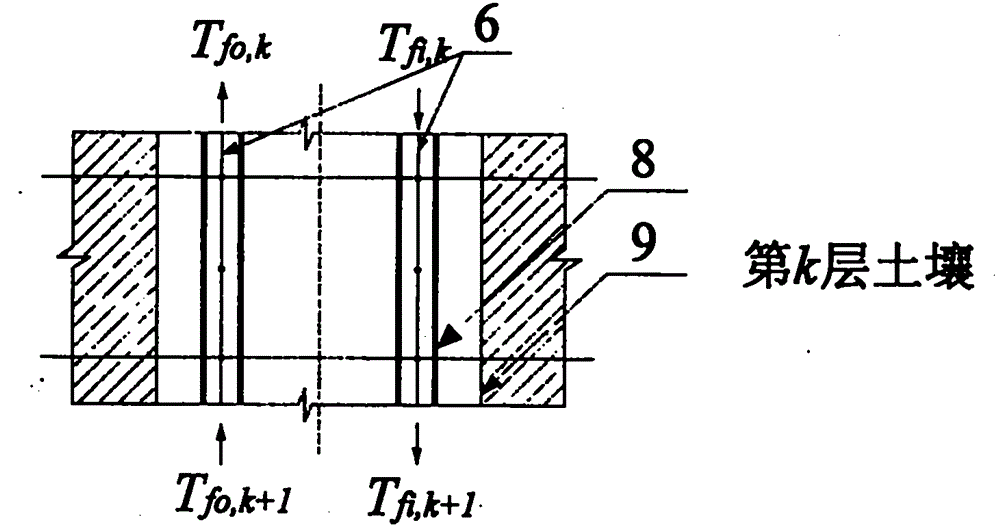In-situ thermal response testing method of stratified thermal properties of underground rock and soil
A technology of thermal response testing and thermophysical properties, applied in the direction of material thermal development, etc., can solve problems such as large changes in thermal physical properties along the depth direction, uneven distribution of rock and soil types, and inability to obtain rock and soil thermal physical property distribution, etc., to achieve improvement and optimization Design method, save test cost, effect of small installation size
- Summary
- Abstract
- Description
- Claims
- Application Information
AI Technical Summary
Problems solved by technology
Method used
Image
Examples
Embodiment Construction
[0033] The technical idea of the present invention is to provide a method that can simultaneously measure the thermal physical properties of rocks and soils at the same time in view of the fact that the current underground rock and soil thermal response testing method can only test the average value of the thermal physical properties of the rock and soil within the depth range, but cannot obtain the layered thermal physical properties at each depth. On-site thermal response test method for thermal physical properties of underground rock and soil layers in different depth layers within the range of borehole depth.
[0034] The structure of the test system of the present invention includes a thermal insulation water tank 1, an adjustable electric heater 2, a water pump 3, an electromagnetic flowmeter 4, a flow regulating valve 5, an optical fiber temperature sensor 6 and a data acquisition device 7, wherein the adjustable electric heater 2 is in the In the heat preservation wat...
PUM
 Login to View More
Login to View More Abstract
Description
Claims
Application Information
 Login to View More
Login to View More - R&D
- Intellectual Property
- Life Sciences
- Materials
- Tech Scout
- Unparalleled Data Quality
- Higher Quality Content
- 60% Fewer Hallucinations
Browse by: Latest US Patents, China's latest patents, Technical Efficacy Thesaurus, Application Domain, Technology Topic, Popular Technical Reports.
© 2025 PatSnap. All rights reserved.Legal|Privacy policy|Modern Slavery Act Transparency Statement|Sitemap|About US| Contact US: help@patsnap.com



